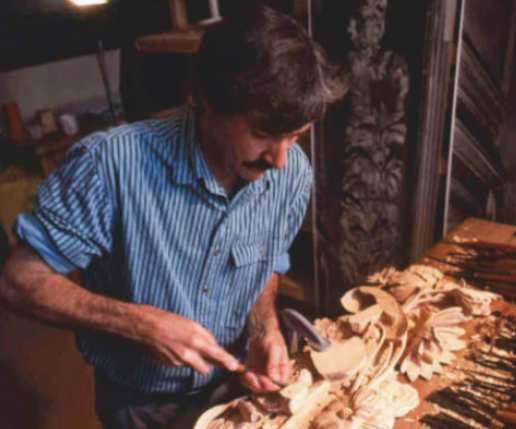And it had begun in a moment: that moment in 1974 when his girlfriend Marietta, later his wife, took him to see the Gibbons carvings behind the altar in St James's Church, Piccadilly. He was thun-derstruck, and his reaction was physical: hairs rising on his neck, his skin tingling, and his tongue seeming to move over ivory's coolness and smoothness. ("The thinking of the body", Yeats would have called it.) His first, academic, thought was to write abook about Gibbons; his second was just to pick up tools and teach himself to carve.

That, too, was completely unexpected. In 1986 he was asked to replace a seven-foot Gibbons drop at Hampton Court Palace, south-west of London, which had been destroyed by fire. He hesitated over it. Exact reproduction, which he had never done, was surely the most slavish tutelage of all. Yet the closer he got to Gibbons—first touching a single stem, then whole pieces, scrutinising his technique, following the movements of his gouges and his thought—the more his own workbench seemed transported to 1698, and the more he saw the larval forms of the half-modelled wood with Gibbons's eyes. When after a year the drop was made, with its exhausting ropes of crocuses and trefoil, he was no longer a slave, but a colleague. The spell was broken.
译文由可可原创,仅供学习交流使用,未经许可请勿转载。












